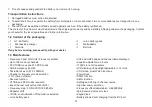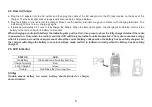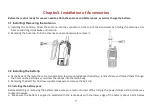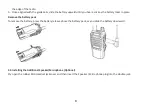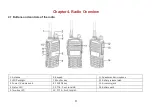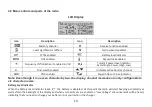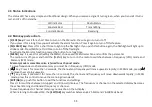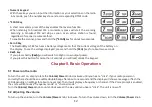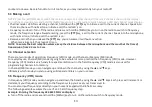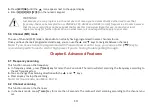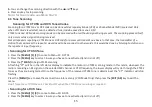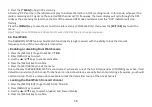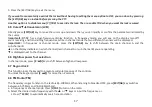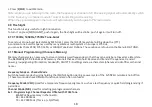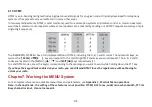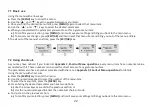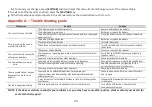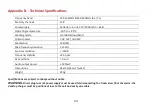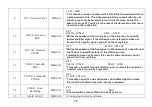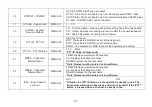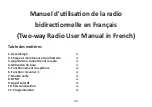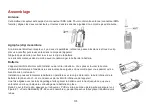
18
c. Press [
F/SOS
] to exit FM radio.
Note: while you are listening to the radio, the frequency or channel of A / B receiving signal will automatically switch
to the frequency or channel mode for normal transmitting and receiving.
When the signal disappears the radio will automatically switch again to FM radio mode.
6.9 Flashlight
This func
�
on is very useful for night illumina
�
on.
To turn it on press [MON/LAMP]; push it again, the
fl
ash light will be strobe; push it again: it will turn o
ff
.
6.10 1000Hz, 1450Hz, 1750Hz Tone-burst
To send out a tone-burst (selectable by MENU 41); press the [F/SOS] key while holding down the [PTT].
A common tone burst frequency used by many amateur radio systems in Europe is 1750 Hz.
you can select from 2100, 1750,1450, or 1000Hz Tone Burst Op
�
ons. These op
�
ons are found on the Menu 41(R-TONE).
6.11 Manual Programming (Channels Memory)
Memory channels are an easy way to store commonly used frequencies so that they can easily be retrieved at a later date.
The
Radioddity GT-82
features 128 memory channels that each can hold: Receive and transmit frequencies, transmit
power,
group
signaling
informa
�
on,
bandwidth,
ANI/
PTT-ID
se
�
ngs
and
a
six-character
alphanumeric
iden
�fi
er
or
channel
name
1
.
Frequency
Mode
vs.
Channel
Mode
Switch
between
modes
by
using
holding
the
[MUNU]
bu
�
on
during
a
power
cycle
of
the
GT-82
EU
(volume
knob
o
ff
/on
).
These
two
modes
have
di
ff
erent
func
�
ons
and
are
o
�
en
confused.
Frequency
Mode
(VFO):
Used
for
a
temporary
frequency
assignment,
such
as
a
test
frequency
or
quick
fi
eld
programming
if
permi
�
ed.
Channel
Mode
(MR):
Used
for
selec
�
ng
preprogrammed
channels.
Ex
1.
Programming
a
Channel
Repeater
O
ff
set
with
CTCSS
Tone
EXAMPLE
New
memory
in
Channel
10:
RX
=
432.000
MHz
TX
=
437.000
MHz
(This
is
a
(+
5)
O
ff
set)

